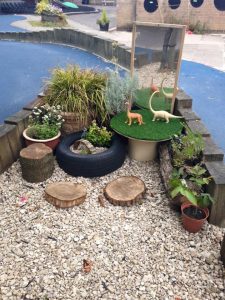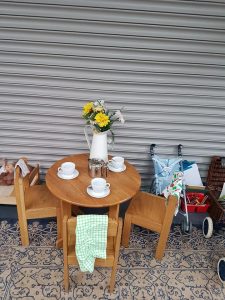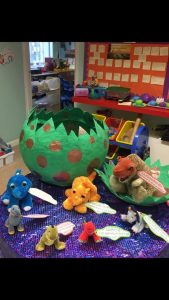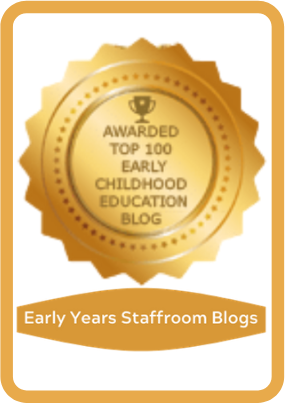The Characteristics of Effective Learning and why are they important?
Children need motivation to learn. Motivation is more important than intelligence and is the key to success for children and adults. Think of the Characteristics of Effective Learning as instilling motivation to not only succeed in Early Years, but to also become lifelong learners. Integrating the Characteristics of Effective Learning in a setting is about how, we as practitioners, provide an environment which ensures these different types of learning occur. When the characteristics are present, solid learning is taking place. Without the characteristics of effective learning, the children will not develop in the areas of learning. Therefore, the Characteristics of Effective Learning are not only statutory, they are essential.
How do we teach children the Characteristics of Effective Learning?
Environment
An Exciting and Fresh Environment
The environment is often referred to as the ‘third teacher’. With the right environment, children can learn completely independently. Hence practitioners need to provide a rich, inquisitive environment to spark the children’s natural curiosity. The environment needs to be exciting to enable children to play and explore. This is a wonderful example of creating awe and wonder:
Open-ended and Natural Resources
We can do this by providing stimulating resources which are accessible and open-ended and relevant to children’s interests. The environment also needs to be calm and that is why many settings are using hessian displays and natural resources. The difference to a child in an environment like this with soft lighting compared to a loud colourful busy environment is dramatic. Real learning and engagement can take place when children are calm. Some settings are working towards having no toys and just using objects that are open-ended and real objects such as tea sets and old-fashioned phones. Some are even having no technology in order to not distract from the learning.
Uninterrupted Outdoor Play
Children need free access to the outside so that they can explore. Read more about outdoor learning here. Children need long periods of uninterrupted play to be able to really play and explore. We have some suggested timetables that work to allow for this. Children need at least half an hour to get into learning, then another hour to develop this so we suggest no less that one and a half hours play. If the play is the interrupted by snack time or break with the rest of the school then it will take them another half an hour to get back into the real learning so you can see how damaging that can be.
Challenging Resources
Resources need to be challenging according to the children’s skills, for example, starting off with resources which resemble something to start with like a garage. To then move onto more open-ended resources which can spark the imagination.
Practitioners
Adult interactions can increase the attainment in each area therefore appropriate training on how to do this for every practitioner in a setting is essential. The Characteristics of Effective Learning are the basis of the Ofsted definition of teaching and learning so Inspectors expect to see practice informed by them. The Early Years Staffroom have created posters that can be used on display alongside images of children displaying the Characteristics of Effective Learning that are in a language that adults and children can easily understand. Practitioners should support and scaffold the children’s thinking. Then make observations of children displaying these characteristics. It’s important to get used to using the language of the characteristics in your observations. Practitioners need to look at what children become engrossed in to help inform planning. We also need to observe and reflect what arouses children’s curiosity and what motivates them, so they can provide provocations in the children’s interests which will display Active Learning. It is important, to maintain intrinsic motivation, to steer clear of rewards and show interest in how children are doing things, not what they produce. A great example of a child not giving up and being motivated comes from Teacher Tom. He had a child in his class who wanted to build a treehouse. She looked up at the tree to assess how she could get to the top and came up with getting a ladder. She found a ladder as they are movable in his setting and a great tool for children to learn from. She tried the ladder, but it wasn’t high enough. So, he thought that would be the end of it but she decided she would build one. He supported her to get the materials, hammer and nails. She and her friends worked together to make the ladder. This didn’t take one day that learning took place over several days of reviewing and planning. Finally, one day the ladder was finished. She put it up against the tree and climbed to the top. Teacher Tom was there to catch her if she fell but he allowed her to take these calculated risks to enable her to have a sense of achievement. This was all the motivation she needed. Practitioners need to be there to support purposeful learning. They need to be there to provide the hammer and the nails and let children come back to their work. Practitioners need to be there to ask questions. We have open-ended questions to display on the walls, see our environment words and questions to help prompt adults. Often the teaching isn’t planning so you can record retrospective planningin order to show the evidence of the learning that has accrued. It may help to create a display to show the job of an Early Years Teacher see our – Teaching is….?Display words. You can combine with the dirty t-shirt display.
Children
Once you have worked on the environment and the interactions of the practitioners there is little left for the children to do except ‘display in play!’ It is important to let children chose their goals and methods. They could also create a ‘question’s display’. Add old displays to scrapbooks on characteristics of effective learning as evidence. Some settings like to get the children thinking about how to learn by making it fun. For example, using named Dinosaurs, for example, using names such as: Exploraptor, Pretendasaur, Thinkodocus, Linkasaurous and Solvatops.
The Characteristics of Effective Learning are not so much about what the children do, which is what we are led to believe, but more about what the adult does. They are essential to creating lifelong motivated learners in the children of our future. In the words of Witney Houston:
“I believe the children are our future Teach them well and let them lead the way Show them all the beauty they possess inside Give them a sense of pride to make it easier Let the children’s laughter remind us how we used to be”
Recommend Reading
- This is how we do it! The Characteristics of Effective Learning in Early Years By Kirstine Beeley
- How children learn – The characteristics of Effective Early Learning by Nancy Stewart
Images by : Reception- Where The Magic Begins Facebook Page















